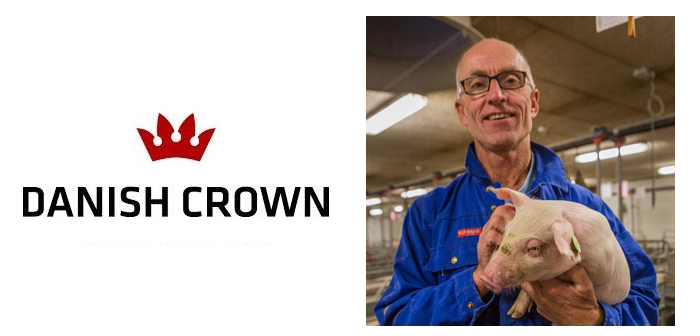A Danish Crown trial designed to keep pigs antibiotic-free from birth to slaughter is proving successful, to a significant degree, but is also throwing up some “incredibly exciting challenges” according to the farmer involved.
While the number of pigs arriving at the Danish Crown’s slaughterhouse without having been treated with antibiotics is growing all the time, the trial has been “by no means painless” for farmer Karsten Westh, who produces about 22,000 slaughter pigs a year on his farm at Østermarie in Denmark’s Bornholm area.
Each week, under the trial, a percentage of his pigs are put to one side and marked with a green earmark to signal that they are antibiotic-free from birth to slaughter. It’s a process which is “presenting challenges on several fronts”.
“There have been some incredibly exciting challenges during the process, and there have been lots of ups and downs which have seen us having to remove the earmarks because the pigs needed treating,” said Mr Westh (pictured above), adding that he certainly had no regrets about participating in the trial.
One of the key challenges is the added man-hours and costs involved in the process, even for the pigs which are successfully kept free from antibiotics.
To avoid the use of antibiotics, for example, a number of vaccines are being used in the herd, which can itself cause problems. Mr Westh’s staff also have to continually check the pigs to make sure everything is all right. This requires more time and flexibility, with a strong and constant focus on hygiene. Tools have to be washed more thoroughly, boots changed more often, and there is generally more washing and drying than ever before.
“It’s an illusion to think that it doesn’t cost extra to produce pigs like this,” said Mr Westh. “We have to spend many more hours in the housing units, which obviously costs money.
“Another thing we have noticed is that there is a much bigger difference in growth rates among the pigs in a single litter. This means that production is far less regular, which suggests there will be a lower through-put.”
At present about 20% of the farm’s full production is making it to the slaughterhouse without being treated with antibiotics. So even, Mr Westh said there is still “a long way to go” in addressing antibiotic-free production.
“We don’t have a manual with all the answers,” he said. “We’re writing it as we go along, and it’s hard to predict how it will work out. However, we don’t see problems, we see challenges, and that is why it’s an interesting process.”
Danish Crown’s export department is also keeping a close eye on Mr Westh’s pigs, along with results from two other weaner producers and five slaughter pig producers who are also part of the trial.
“So far, the greatest challenge has been to ensure a constant and sufficient supply of pigs to the slaughterhouse, but customers are definitely interested,” said the company, adding that its export department has already received positive feedback from the market.
“We have sent some sample deliveries to the most interested customers, and we are clearly seeing the keenest interest from the United States,” said Danish Crown’s associate vice president, exports, Søren Tinggaard.




